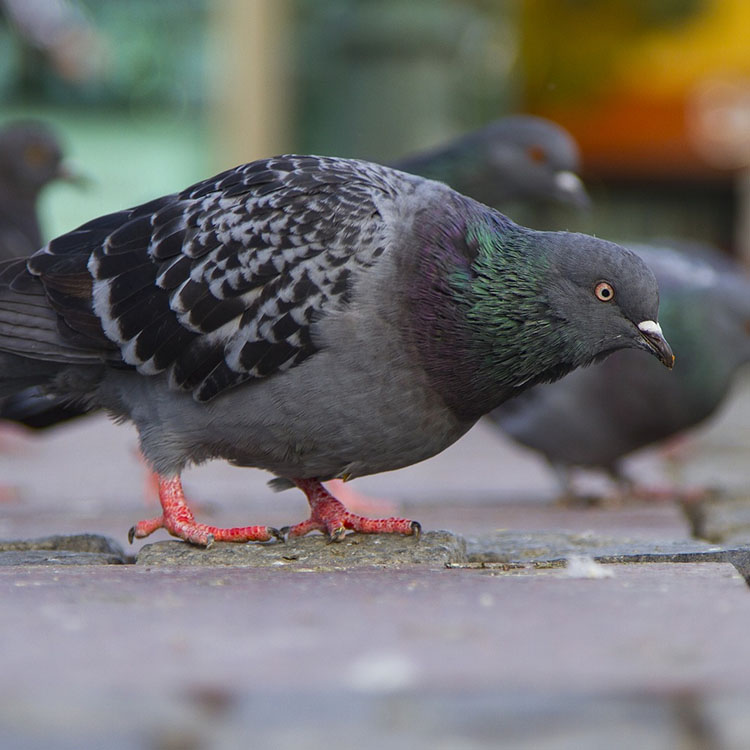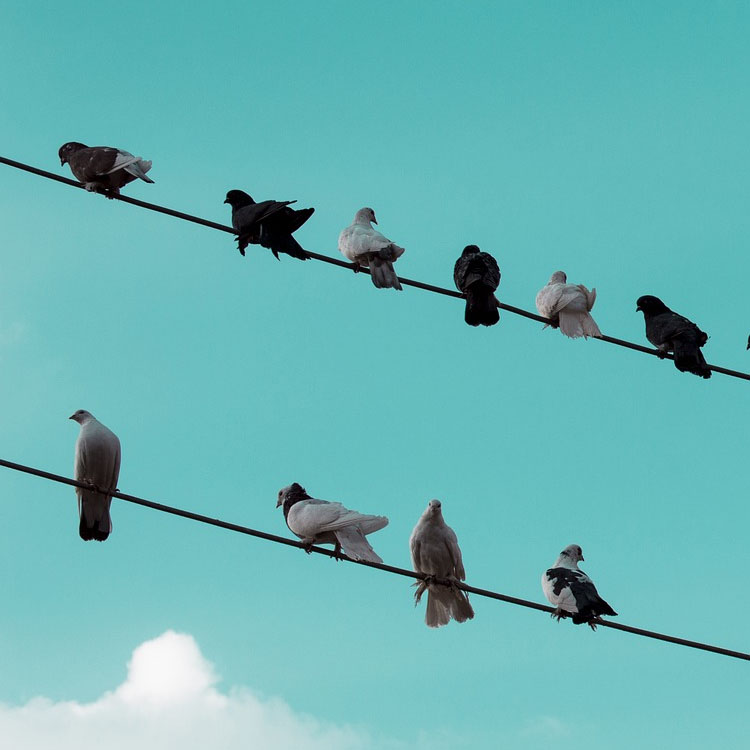How to Remove Pigeons
Removing pigeons is an arduous task that takes dedication, technical knowhow, and a responsibility to abide by local rules of engagement, exclusion, and extermination. As these lawas vary by location, it is up to the homeowner and wildlife removal services to be properly educated so as not to incur large fines for harming the birds or handling them improperly.

How Do I Know It's a Pigeon?
Pigeons will have a slightly green-colored head and neck, mixed with purple. The body and torso will be gray, with black-tipped wings and a black tail. Their claws will be pink and orange colored, and they will have pooped all over the place. The like to make their habits in domesticated or developed areas like the attics of homes, porch or patio areas, and barns.
Pigeons are pretty opportunistic animals and will go wherever they can find food. They are one of the largest species of feral birds, and will make nests out of readily available twigs, leaves, and if found, cotton fibers and discarded pieces of rope. They are most at home in church steeples or other high, out of reach places because they innately fear predators, despite have few natural ones.
Getting Rid of Pigeons
Pigeons will stick around until they are excluded. In major cities, you'll see large tightly-spaced netting around parking garages, the tops of tall buildings, and near airport radio communication towers to prevent damage from bird feces and intereference from their nesting. In the suburban setting, you can use nets to exclude pigeons from under the eaves of your home, and to cover damaged soffit until it can be replaced.

Pigeon Trapping
When trapping any animal in and around your home, it's wise to make sure that you are able to check your traps with some frequency. You never know what an open trap will ensnare, be it a raccoon, another species of bird, or someone's house pet. Try not to use kill traps for any nuisance wildlife to prevent unfortunate accidents and from breaking any laws that apply to your area. One way you can avoid all of those potential problems is to use exclusion methods, mentioned briefly in the section above.
Pigeon Exclusion
There is no formula for widlife exclusion other than to build exclusion devices that allow the nuisance creature to escape the enclosed affected area, but not return. The most apt metaphor is a funnel. If you pour liquid into the wide portion of a funnel from a container, it will all exit through the smaller hole at the bottom. However, if you were to tip the funnel over and try to pour the liquid into it at the same rate, little, if any would be able to exit through the wide portion (back into your home). Lucky for us, pigeons aren't as smart as water (in the case of the funnel metaphor) and will likely not re-enter the small hole and find their way back into the attic. Furthermore, special care is usually taken to prevent re-entry through the small hole by placing cloth over the exit; as birds try to fly up into the exit passage, the cloth folds in on itself and restricts the birds from flying back in.
